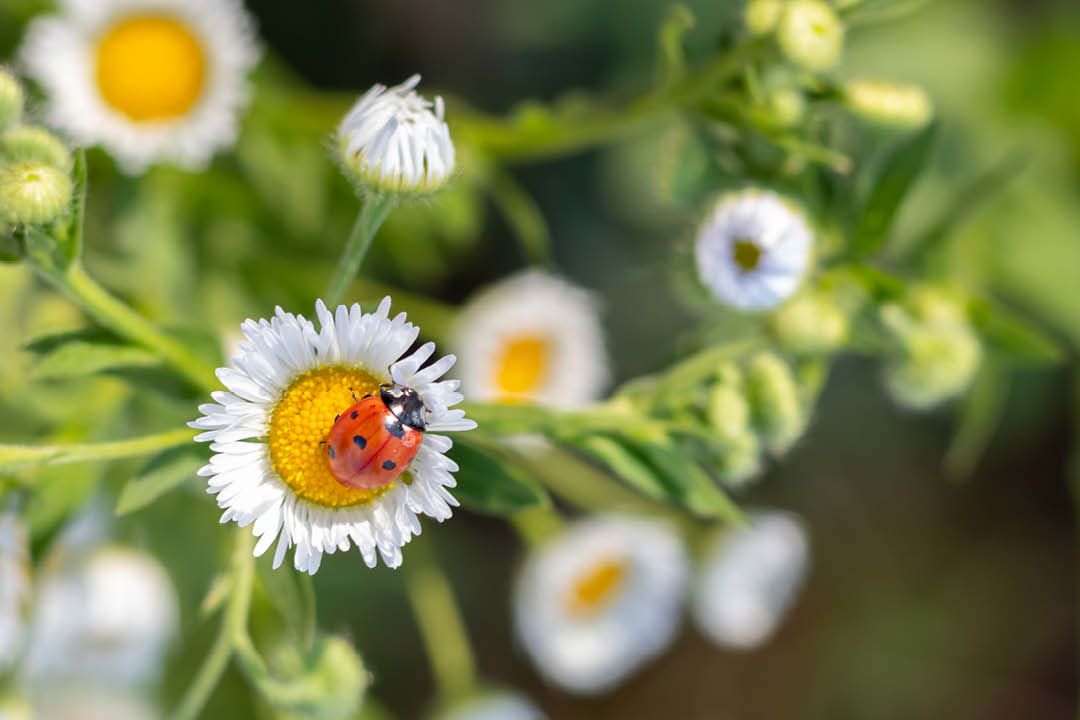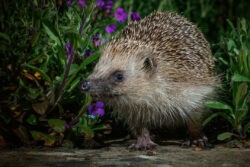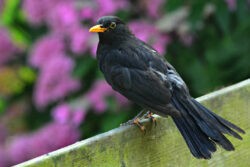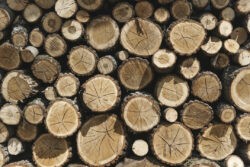The UK has only 50% of its biodiversity left, and England has even less, at 47%! Our insect population has declined by 60% in the last 20 years.
Every small thing we do (or don’t do), can help to change this tragic fact.
Spraying insecticides on our gardens is unnecessary….it really is…we can learn to work with nature, so we don’t inadvertently destroy many useful creatures, that are part of the web of nature / our biodiversity that we top.
Essential: we must know our friends in this fight. Here’s one vital insect……
Ladybirds, sometimes called Ladybugs, are one of our greatest allies, and much loved by gardeners, and indeed by most people. Why so loved?
*Well first Ladybirds, are the captain in chief of aphid consumption. During their short lives…of usually about one year, they consume up to 5,000 aphids!!
They also eat other soft bodied pests in the garden. They also eat some serious agricultural pests and their eggs.
*They are beautiful, often bright red, with blackspots, but they could be brown, orange, black or even yellow, with spots of many differing numbers. Their bright colours warn their predators, (who might eat them), that they have a bitter taste.
*Next, Ladybirds are totally harmless to us, our children, pets and our homes. They do not carry disease, nor do they sting or bite. They are your best friend in a garden.
*So, a bit about them…. the adult ladybird, lays eggs on the underside of a leaf. They often choose an aphid infested plant to lay their eggs on… very sensible!
The eggs hatch in about 3-10 days, depending on the temperature, and grow into a larvae, which emerge from the eggs as strange looking, (very strange), spiny creatures you could easily mistake for some horrendous foreign intruder insect…you MUST be able to recognise these little insects or you may panic at the first sighting of them, and run for help.
At first, they are tiny, but quickly grow, soon gaining the look and behaviour which has given to them the description of “the aphid lions”.
The larvae are voracious eaters of aphids. After about 3-4 weeks of eating, they attach themselves by their tail to the underside of a leaf, tree, post, shrub, and pupate. Inside the casing, the tissues re-form amazingly into an adult ladybird. This takes about 2 weeks; they then emerge as a seriously cute but committed pest munching ladybird!
As the temperature falls in autumn, they look for sites to hibernate. Fence posts, fallen leaves, the dead stalks of perennials, shed corners, sometimes even a quiet corner of our homes. They usually huddle together with other ladybirds to keep up their moisture levels and regulate their temperature.
BUT DO NOT SPRAY…PLEASE… you will kill these wonderful creatures, and many other useful pest control agents in your garden.
DO NOT CUT DOWN YOUR PLANTS IN AUTUMN, wait until spring. It may be the very hollow stalk they have chosen as a cosy hibernation site.







